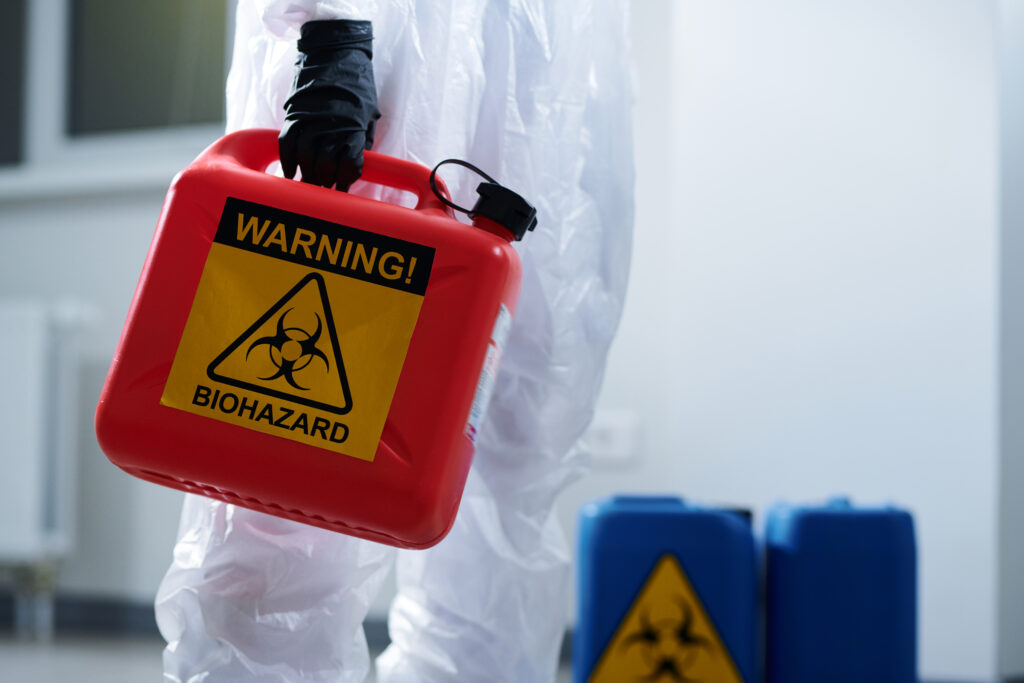Decoding Chemical Labels and Hazard Symbols: Ensuring Workplace Safety
1. Understanding GHS Labels: The Globally Harmonized System (GHS) of Classification and Labeling of Chemicals provides a universal standard for identifying chemical hazards. Familiarize yourself with GHS label components including pictograms, signal words, hazard statements, precautionary statements, and product identifiers.
2. Pictograms: Each GHS pictogram consists of a symbol on a white background framed within a red border and represents a distinct hazard type. Learn to recognize these symbols and understand their meanings.
– Flame: Indicates flammability
– Exclamation Mark: Represents irritants or skin sensitizers
– Gas Cylinder: Warns of gases under pressure
– Corrosion: Highlights chemicals that cause skin corrosion or metal corrosion
– Exploding Bomb: Used for explosives or self-reactives
– Flame Over Circle: Denotes oxidizers
– Environment: Indicates aquatic toxicity
– Skull and Crossbones: Alerts to acute toxicity
– Health Hazard: Signifies carcinogenicity or respiratory sensitization
3. Signal Words: These are used to indicate the level of severity of the hazard. “Danger” is used for more severe hazards, while “Warning” is used for less severe hazards.
4. Hazard Statements: These statements describe the nature and degree of the hazard a chemical presents, such as “Causes severe skin burns and eye damage”.
5. Precautionary Statements: These statements advise on how to minimize or prevent adverse effects resulting from exposure. They cover general, prevention, response, storage, and disposal precautions.
6. NFPA 704 Diamond: Understand the National Fire Protection Association (NFPA) 704 hazard identification system, commonly known as the “fire diamond”. Each color in the diamond represents a different type of hazard and the number indicates the severity of the hazard.
7. HMIS Labels: The Hazardous Materials Identification System (HMIS) is another labeling system used primarily in the U.S. It uses color-coded bars, numbers, and letters to convey hazard information.
8. Storage and Segregation of Chemicals: A proper understanding of hazard symbols assists in the correct storage and segregation of chemicals, preventing incompatible substances from being stored together.
9. Emergency Response Information: Familiarize yourself with symbols and statements that provide guidance on what to do in case of spills, leaks, or other emergencies.
10. Regular Training and Updates: Ensure that all employees undergo regular training on chemical label decoding and stay updated with any changes in labeling standards or new hazard symbols.
11. Safety Data Sheets (SDS): Alongside labels, refer to the Safety Data Sheets for detailed information about the chemical, including potential hazards and safety precautions.
12. Label Maintenance and Legibility: Regularly check that labels on chemical containers are intact, legible, and have not faded, ensuring clear communication of hazards at all times.
13. Global Understanding and Compliance: Be aware that while GHS provides a standardized approach, variations can exist between regions and countries. Ensure compliance with local regulations and standards.
Understanding and properly interpreting chemical labels and hazard symbols is a fundamental aspect of maintaining workplace safety. It empowers employees to make informed decisions and take appropriate precautions, thereby significantly reducing the risk of accidents and injuries related to hazardous chemicals.
All the above-referenced information on GHS labels and hazards can be found at: https://www.osha.gov/hazcom/global








